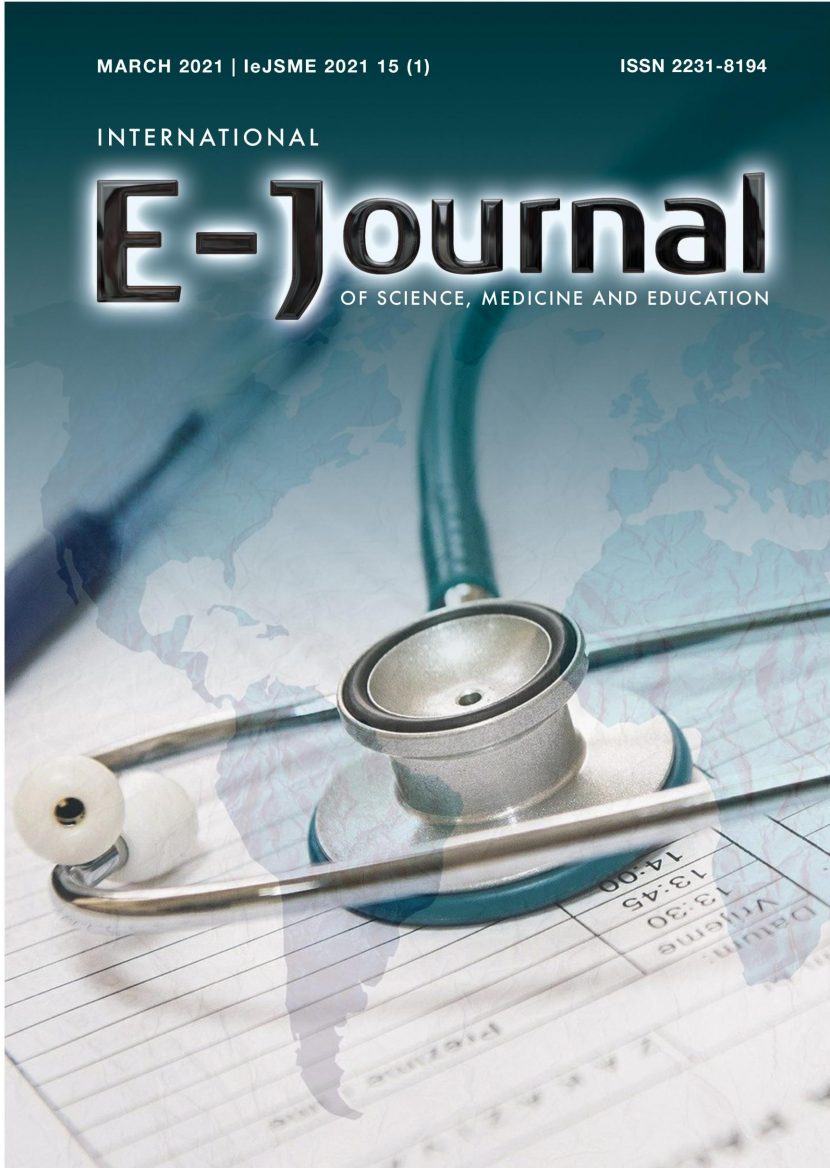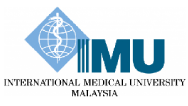Author: Pei Kuan Lai
Mobile Learning: Concepts and Applicability
Authors: Sivalingam Nalliah
Citation: IeJSME 2020 14(1): 1-7
DOI: https://doi.org/10.56026/imu.14.1.1
Salivary amylase and adiponectin as potential non-invasive markers of glycaemic control in Malaysian type 2 diabetes mellitus participants
Authors: Helen Thong, Sangeetha Shyam, Ammu Radhakrishnan, Cheong Lieng Teng.
ABSTRACT
Introduction: Serum amylase and adiponectin levels have shown promise as markers of cardio-metabolic diseases.
However, the levels of these markers in saliva and their association with glycaemic management in diabetes mellitus (DM) are not well documented. Therefore, we investigated the correlation of salivary amylase and adiponectin concentrations with measures of glycaemic control in type 2 diabetes mellitus (T2DM) participants.
Methods: We conducted a cross-sectional study involving 80 T2DM participants of Indian and Malay ethnicity. Saliva was collected, and salivary amylase and adiponectin concentrations were analysed. Recent fasting blood sugar and HbA1c of the participants was obtained from their medical records. The correlations of salivary amylase and adiponectin with fasting blood sugar and HbA1c were calculated using Spearman’s correlation.
Results: There was a weak positive correlation between salivary adiponectin and HbA1c (rho = 0.221, p = 0.051). The salivary adiponectin levels was significnalty lower among participants with good glycaemic control (HbA1c ≤ 7.0%) compared to those with poor glycaemic control (HbA1c > 7.0%,) (1.13 (1.75) vs. 2.34 (3.54) ng/ml, p = 0.039).
Conclusion: Salivary adiponectin weakly correlated with HbA1c, while salivary amylase showed no correlation with
the glycaemic parameters studied. Therefore, salivary adiponectin may warrant further investigation as a potential non-invasive biomarker of T2DM.
Keywords: Type 2 diabetes mellitus (T2DM); salivary adiponectin; salivary amylase; haemoglobin A1c (HbA1c).
Citation: IeJSME 2020 14(1): 8-21
Contradictory diagnostic investigation results of an unusual skin lesion in a man with HIV-HBV coinfection – A diagnostic and management conundrum
Authors: Gerald Jian Ming Lee and Kwee Choy Koh
ABSTRACT
This case report highlights the potential ramifications of an error in the diagnosis of an unusual skin lesion due to misguided interpretation of conflicting investigation results, in a treatment-experienced patient with HIV-HBV co-infection. The ramifications include potential life threatening limitation of therapeutic options for 2nd line antiretroviral therapy due to potential drug-drug interactions.
Keywords: HIV, tuberculosis, antiretroviral therapy, molluscum contagiosum, drug-drug interaction.
Citation: IeJSME 2020 14(1): 22-24
IRDI Public Health Policy Dialogue Series No. 4: The Malaysian National Immunization Programme: Should childhood immunization be made compulsory by law?
Authors: Pei Kuan Lai, Cheong Lieng Teng, Lokman Hakim Sulaiman, Patricia Kim Chooi Lim.
Keywords: National immunization programme, childhood vaccines, mandatory vaccination, vaccine hesitancy.
Citation: IeJSME 2020 14(1): 25-29
IeJSME 2021 15(1)
Editorial Board and Contents
Quo vadis? Reflections on the future direction of travel medicine practice and research
Authors: Gerard T Flaherty, Vedang Vyas, Ferdia Browne.
Keywords: Travel medicine, COVID-19, pandemic, digital health, virtual reality.
Citation: IeJSME 2021 15 (1): 1-4
Critical care nurses’ knowledge, attitudes and practices on the usage of physical restrainer
Authors: Swee Geok Lim, Vivian Jeng Tuk Fong.
ABSTRACT
Background: Physical restraint is any measure or technique that prohibits an individual’s body movement. Although physical restraint is one of the most common methods used to ensure patient safety in the intensive care units, its usage is an arguable practice. Involuntary immobilisation of a patient challenges patient’s rights while over usage of physical restraints can lead to possible harm to the patients. Critical care nurses especially should make accurate decisions regarding the use of physical restrains if they are to ensure patient safety.
Objective: The objective of this study was to determine the knowledge, attitude, and practices of critical care nurses on usage of physical restrainer in a private hospital in Klang Valley.
Methods: This was a cross-sectional, quantitative descriptive study using the Physical Restraint Questionnaire (PRQ) to collect data from 103 registered nurses through simple random sampling in the Critical Care Unit of a private hospital.
Results: A total of 103 critical care nurses participated in this study. The nurses had moderate level of knowledge of physical restraint usage, 43.96 ± 4.05 (36 to 53), positive attitude towards the use of physical restraint, 30.47 ± 2.96 (24 to 39) and good practices on usage of physical restrainers, 38.88 ± 2.73 (29 to 43).
Conclusion: Findings revealed that majority of critical nurses have moderate knowledge, positive attitude and satisfactory practices on usage of physical restraint. However, continuous updates on usage of physical restraint and its legal implications are highly recommended to ensure critical care nurses are better informed before deciding to use physical restraint on their patients.
Keywords: Knowledge, attitude, practices, physical restraint, critical care nurses, acute care units.
Citation: IEJSME 2021 15 (1): 5-18
A Correlational Study between Coping Strategies and Compassion Satisfaction among Crisis Helpline Volunteers
Authors: Kiranjeet Kaur, Puvessha Jegathisan, Cheryl Tham Sin Yi
ABSTRACT
Introduction
Within the recent years, crisis helpline organizations in Malaysia have been experiencing a surge in calls, and with the current worldwide anxiety caused by Covid-19, these call volumes are expected to rise. Therefore, volunteers who staff these helplines are continuously placing their Professional Quality of Life (ProQoL) at risk due to the ongoing stressors involved in this service. However, it has been previously noted that the utilization of coping strategies may contribute to the enhancement of a volunteer’s ProQoL. Hence, this study focuses on examining the relationship between three types of coping strategies and the positive aspect of ProQoL, which is compassion satisfaction.
Methods
Through the use of a cross-sectional survey design, a total of 118 crisis helpline volunteers within the Klang Valley responded to a self-report online questionnaire consisting of the Coping Strategy Indicator (CSI) and the Professional Quality of Life Scale Version 5. Pearson’s correlation analysis and multiple regression analysis were used to analyse the relationship between the variables.
Results
Problem-solving coping and social support coping demonstrated a positive correlation with compassion satisfaction (r = .677, p < .001) (r = .261, p = .002), whereas avoidance coping demonstrated a negative correlation (r = -.572, p < .001). Correspondingly, problem-solving coping was revealed to be the best predictor towards compassion satisfaction through the regression analysis.
Conclusion
The findings of this study suggests that utilizing adaptive coping mechanisms may produce a more favourable outcome among crisis helpline volunteers as it correlates to a higher satisfaction level. Consequently, organizations would be able to positively benefit from a high satisfaction level within their volunteers as it would reinforce their motivation and efforts to continue engaging in this noble service.
Keywords: coping strategies, professional quality of life, compassion satisfaction, crisis helpline.
Citation: IEJSME 2021 15 (1): 19-27


